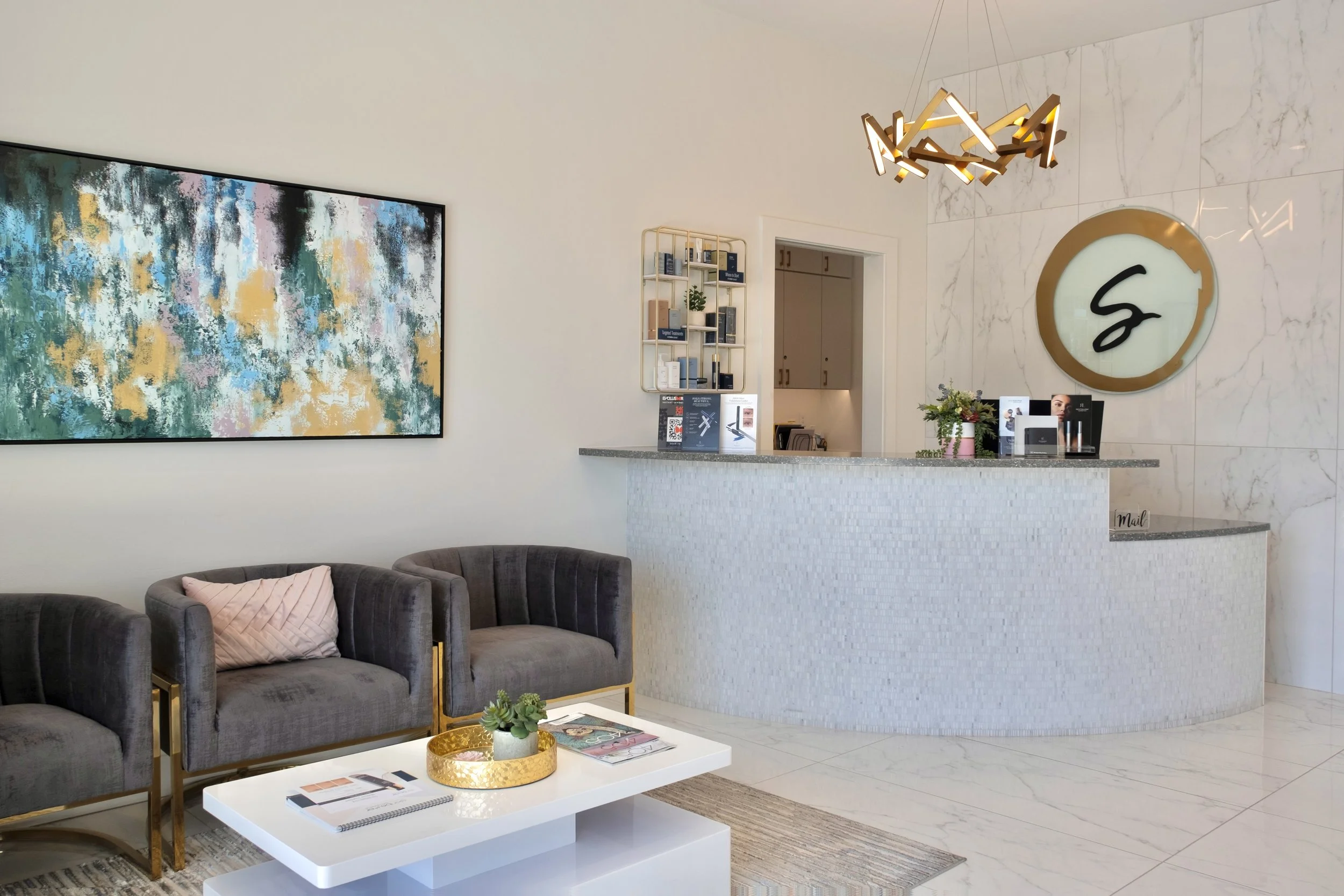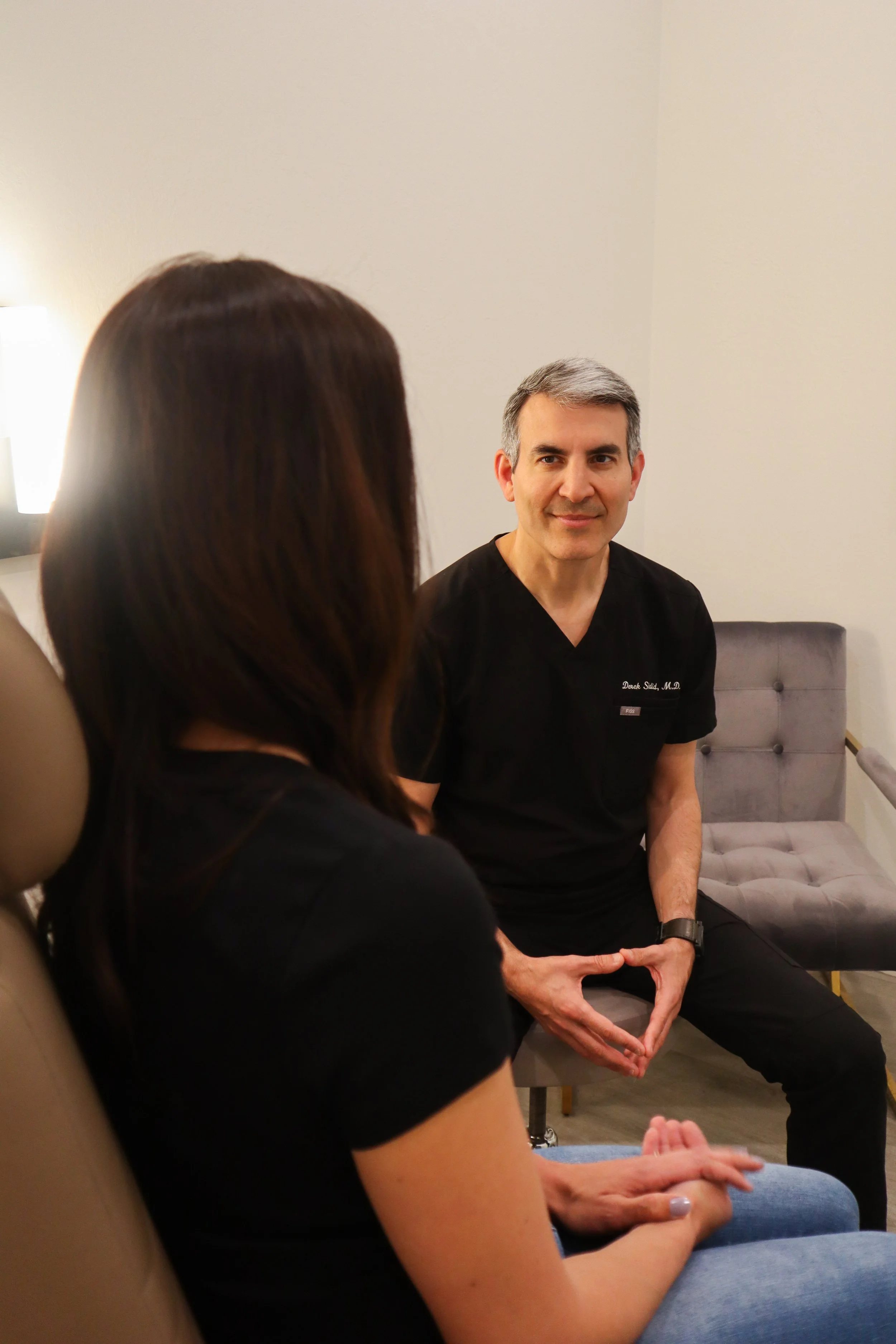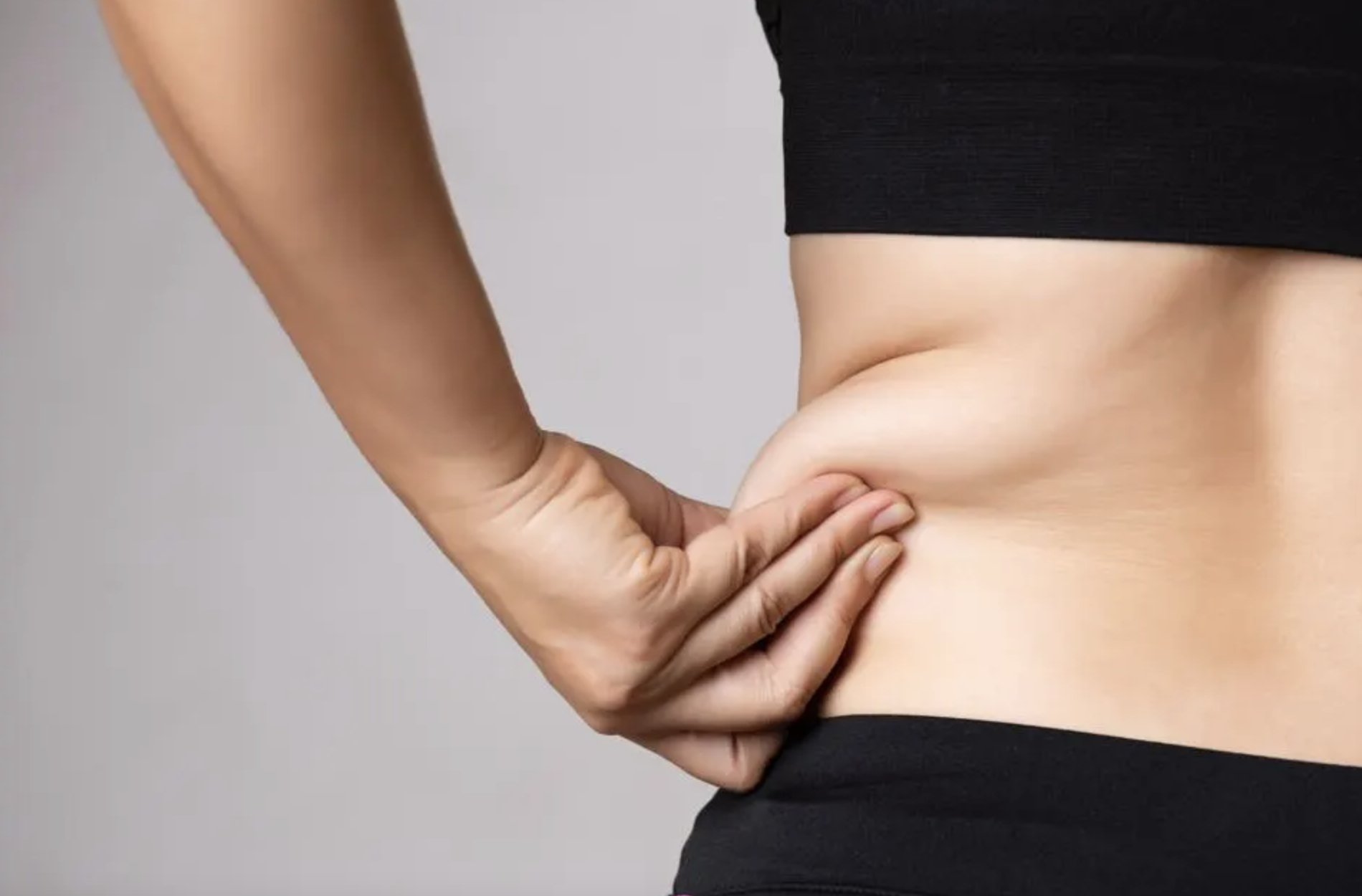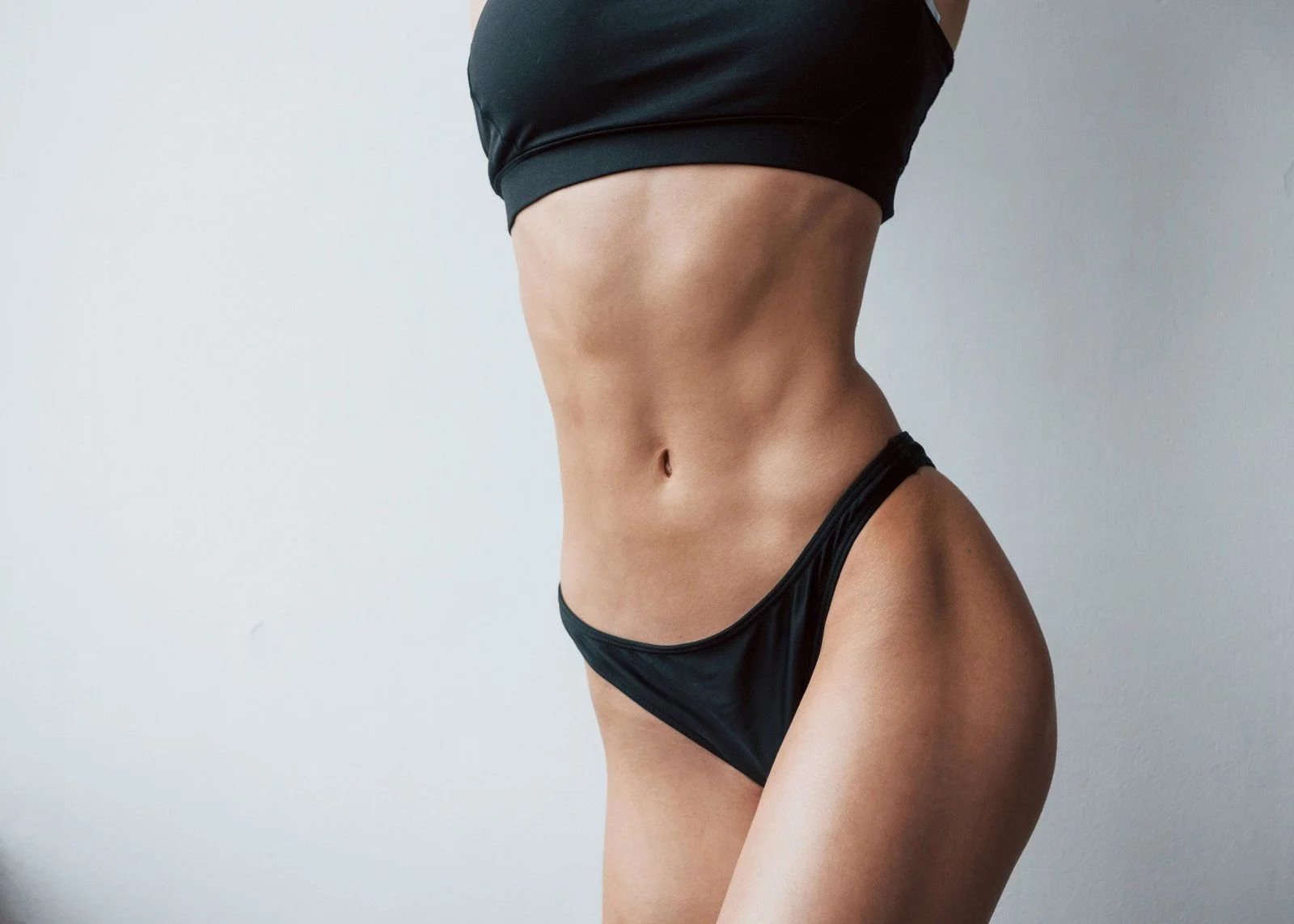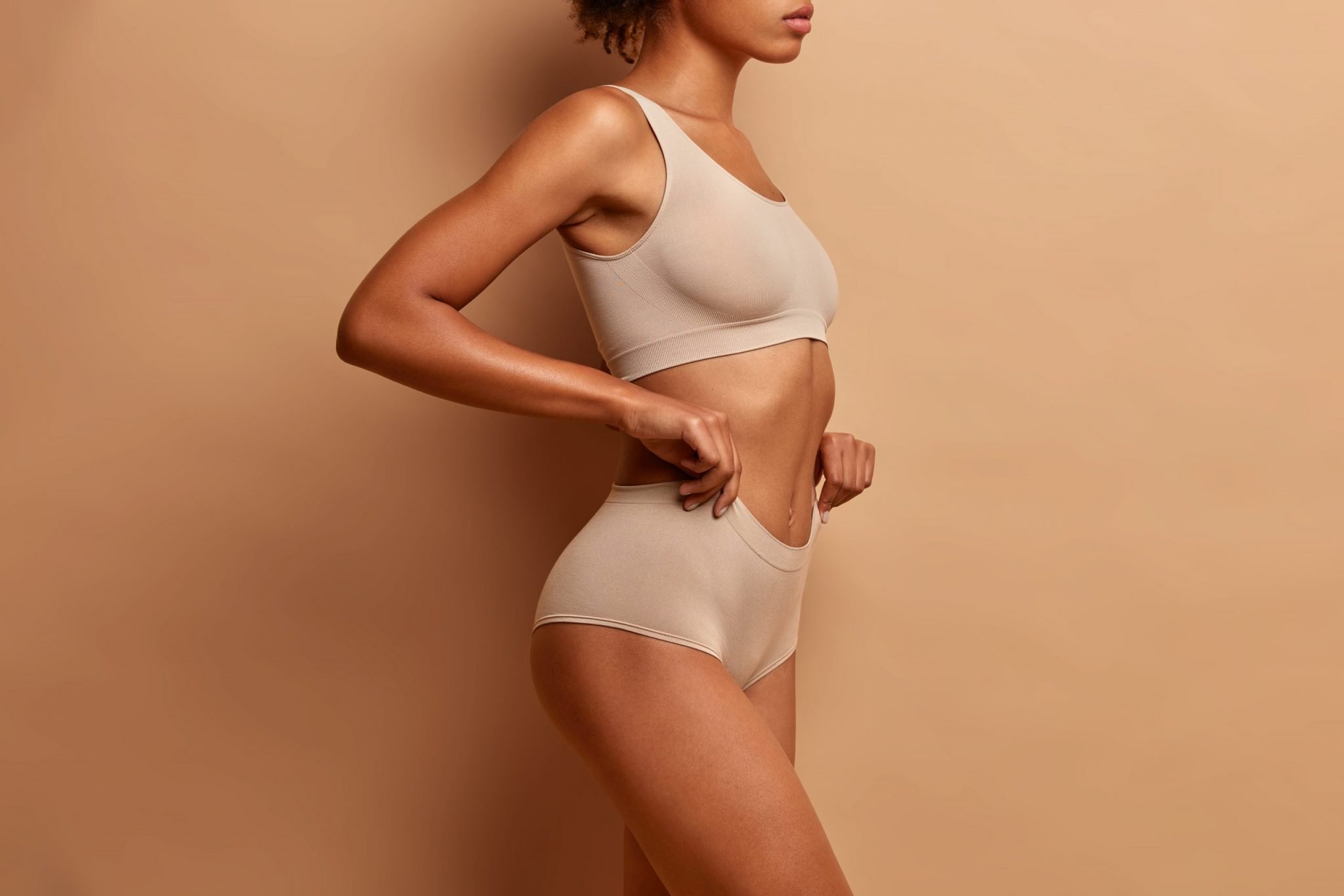
PLASTIC SURGERY
BODY PROCEDURES
Your body is your temple.
Considering plastic surgery on an area of the body? Shadid Plastic Surgery provides a wide arena of possibilities to achieve the look you’re after. Board certified plastic surgeon, Dr. Shadid, employs both highly skilled surgical techniques to help shape and contour your body and surgical procedures to help lift and tighten the areas of the body that exercise and diet can’t touch.
-
A body lift improves the shape and tone by removing excess skin and the underlying fat.
-
BodyTite is a minimally invasive, low-impact form of liposuction that is capable of dual-action fat reduction and skin tightening treatment during a single treatment.
-
Fat grafting is a dual procedure that enhances areas of the body with lost volume through liposuction and fat transfer.
-
Liposuction (lipoilasty) is a common surgical procedure that removes deposits of excess fat from specific areas of the body, face or neck.
-
A mommy makeover combines plastic surgery procedures that help to restore the shape of a woman’s body following childbirth.
-
A tummy tuck, also known as abdominoplasty, is a surgical procedure that removes excess fat and skin, and strengthens weak abdominal muscles for a smoother abdominal profile.
You’re in great hands.
The decision to undergo any cosmetic procedure is extremely personal. For the last three decades, Dr. Shadid has achieved high recognition throughout Oklahoma City for consistently achieving natural results and extremely high patient satisfaction ratings.
During your initial consultation and throughout your time together, he’ll listen to your desires for the outcome of your surgery and pair that with real world experience and the knowledge of what techniques will achieve the best results based on your body type, health history, and circumstances.
PLASTIC SURGERY PROCEDURES
IN OKLAHOMA CITY
BODY LIFT
A body lift at Shadid Plastic Surgery, also known as body plastic surgery, improves the shape and tone by removing excess skin and the underlying fat. Excess sagging fat and skin are caused in part by poor tissue elasticity. A complete lower body lift treats the buttocks, abdomen, waist, hips and thighs in one procedure. Body lifts can also be used to treat excess skin, cellulite and sagging fatty tissue – all of which lose elasticity as a result of being stretched for a long period of time.
BENEFITS OF A BODY LIFT
Eliminates excess skin; Boosts stamina and mobility
Can be combined with liposuction to combat stubborn fat
Reshapes and sculpts the torso; Enhances personal confidence
BODY LIFT Q&A
-
Before deciding to undergo body lift surgery, your weight must be relatively stable for at least a year. Women considering future pregnancies should postpone an abdominal body lift since pregnancy may reduce the procedure’s overall results.
Good candidates for body lift surgery include:
Individuals with significant soft tissue looseness in multiple body areas.
Healthy individuals who do not have medical conditions that can impair healing or increase risk of surgery.
Non-smokers.
Individuals with a positive outlook and realistic goals for what body lift surgery can achieve.
Individuals committed to leading a healthy lifestyle, including proper nutrition and exercise.
-
Body lift surgery involves making an incision at the waist or slightly below it and removing excess skin and closing the skin under some tension. The incision length and pattern depends on the amount and location of excess skin to be removed. Most commonly, a body lift treats both the abdomen and the back area and is therefore circumferential.
A complete lower body lift treats the buttocks, tummy, waist, hips and thighs in one procedure. A circumferential incision around the body removes an apron of excess skin and fat and repositions and tightens tissue.
Dr. Shadid may recommend a combination of liposuction and body lift procedures to achieve an improved overall contour.
-
The results of body lift surgery are visible almost immediately, but final results may take several months to fully develop depending on your individual needs. While scars will remain, the overall results are long lasting through maintaining a stable weight and exercise. View our body lift before and after photos to see results from actual patients.
-
Following your body lift surgery, dressings or bandages will be applied to the incisions. A small, thin tube may be temporarily placed under the skin to drain any excess blood or fluid that may collect after the surgery.
Body lift surgery is a major surgical procedure and requires significant recovery time. Pain and discomfort are first managed with intravenous or intramuscular medications, and later with oral pain medication. A specific diet may be encouraged and your plastic surgeon will guide you on how to reduce the risk of complications.
Dr. Shadid may also provide you with a medical compression garment to wear at all times except while bathing. Surgical dressings are generally removed two days after surgery with showering allowed at that time.
Your post-surgery activities will be restricted until you have had plenty of time to recover. Restrictions may include avoiding exercise and lifting of five pounds or more. Walking is encouraged after surgery; however, further exercise is not recommended until sufficient healing has occurred.
BODYTITE
BodyTite at Shadid Plastic Surgery is revolutionizing the world of liposuction and achieving smoother, more natural-looking beautiful body sculpting results. The BodyTite system is a next-generation evolution of liposuction called radiofrequency-assisted liposuction (RFAL). It offers unparalleled safety by continuously monitoring both internal and external tissue temperatures to effectively tighten the skin and liquify fat cells. Minimally invasive, low-impact, and incredibly safe, BodyTite is effective as both a standalone treatment and combined with liposuction for superior body sculpting results.
TREATMENT AREAS
BodyTite is ideal for patients of the “in-between” gap category where their bodies have some amount of excess skin and fat tissue, but not enough to warrant a surgical procedure such as abdominoplasty. BodyTite is best-suited for treatment of larger areas on the body, like the stomach, thighs, buttocks, back, “bra fat” area, flanks, and arms.
BODYTITE Q&A
-
The science that makes BodyTite’s incredible results possible begins with radiofrequency-assisted lipolysis or RFAL. RFAL refers to two aspects of BodyTite’s capabilities: fat aspiration and dermal heating. The design of BodyTite’s internal and external probe is unique. The internal probe has a suction-attachment and is worked through the subcutaneous fat layer beneath the skin. Meanwhile, the second, external probe applies dermal heating at the surface level of the skin directly above the internal probe.
These two heating probes produce dermal heating action that results in 3-dimensional soft tissue contraction. Clinical studies have shown 30% skin contraction achieved simultaneously during fat aspiration. This simultaneous dermal heating and fat aspiration also result in improved treatment efficiency.
-
BodyTite is performed under local anesthesia on an outpatient basis, which means there will be no need to “go under” and you’ll be on your feet and able to return home as soon as the treatment is complete. The procedure will involve numbing injections to the treatment site and swell the fat layer for ease of aspiration. Through a small incision (measuring less than 3 mm) the BodyTite probe is inserted and moved through the subcutaneous fat layer.
-
After the session is complete, relatively minor swelling and bruising may occur, but improvements may be immediately obvious. A compression garment is wrapped around the treated area to reduce swelling and allow the body to settle into its newly defined contours.
Patients are able and encouraged to get up and walk in the first 24 hours after their treatment, but will be limited to light activity. Within a few days, the swelling will dissipate.
-
BodyTite and the tummy tuck are effective treatments for addressing sagging and skin laxity around the abdomen and flanks. However, the tummy tuck, or abdominoplasty, remains the ideal treatment for removing excess skin from the abdomen and tightening stretched abdominal muscles that can typically occur due to pregnancy or extreme weight loss.
BodyTite is ideal for those “in between” who have some skin laxity and fat in the midsection, but not enough to warrant surgery. Some patients with significant skin sag around the abdomen may opt for BodyTite treatment since the procedure is less intensive, produces negligible scarring and involves shorter recovery time.
FAT GRAFTING
Fat Grafting at Shadid Plastic Surgery is a natural and permanent solution to enhance areas of the body that have lost volume. The procedure is two-fold and starts by utilizing the patient’s own fat cells through liposuction, then transfers those fat cells to the intended area. The grafted fat establishes its own blood supply in its new home and survives as a permanent living part of you. By using your own natural fat cells, a subtle enhancement is achieved for dramatic, long-lasting results.
A major benefit of this procedure is that patients are not only able to enhance certain features of their body using their own fat, but they also have the opportunity to slim down a region of the body to provide better contour. Therefore, patients naturally augment their body and sculpt a figure that will leave them feeling their best.
FAT GRAFTING Q&A
-
The best candidates for fat grafting will have enough excess fat on other areas of the body to use for the transfer. The most common donor sites are the abdomen, flanks (love handles), and inner or upper thighs. Patients must be prepared to have liposuction on one of these areas in order to obtain the fat cells. This allows patients to slim one area of the body and enhance another at the same time.
-
No matter where you are choosing to have a fat grafting procedure, the process will begin by obtaining the fat cells. For this step, liposuction will be used in the appropriate donor area. Tiny incisions will then be made where a cannula can be inserted, breaking up and removing the stubborn fat cells. Those fat cells will then be collected and processed in a centrifuge. This ensures that only pure fat cells are filtered out and used for placement. The fat will then be transferred to the target area. This is done using small incisions and a blunt tip cannula. A small amount of fat is placed in several points across the area to ensure precise and even distribution.
-
The recovery process will vary depending on where the fat grafting was performed. Patients can expect two recovery sites; the donor site and the placement site. Some swelling, bruising, and general discomfort can be expected in both of these areas and can be controlled with pain medication and an ice pack. The most important part of the recovery process will involve avoiding any pressure to the transfer site. For a breast fat transfer, this will require no laying on the stomach. Putting any pressure on the transfer site could cut off the blood supply to the new fat cells, causing them to die.
Our team will ensure you have all the necessary post-op care instruction and restrictions when you leave your procedure. It is important to follow these carefully and take the necessary time off work to properly recover. After your recovery process, you can anticipate a natural-looking enhancement that is long-lasting!
-
Donor sites are areas of the body that have enough fat that can be extracted and used for the natural augmentation. The most common regions of the body that are used as donor sites include: the abdomen, back, flanks, inner thighs, outer thighs, and the upper arms
LIPOSUCTION
Lipoplasty, commonly known as liposuction, is a common surgical procedure that removes deposits of excess fat from specific areas of the body, face or neck. There is a reason that liposuction has been one of the most popular plastic surgery procedures for over a decade: it allows surgeons to sculpt a more svelte, proportional, and beautiful figure in both men and women. Liposuction excels for areas of disproportion. That does not mean that a patient has to be thin; it only means that there needs to be an area that is disproportionate such as a bulge or a shape that does not flow harmoniously with the surrounding areas.
TREATMENT AREAS
Liposuction is an effective for nearly every area of the body, including under the chin, the chest and breast areas, waist, and all the way down to the ankles. The most popular treatment areas include the abdomen, hips, and legs.
LIPOSUCTION Q&A
-
Liposuction is not a treatment for obesity. If someone eats more calories than they expend after liposuction, over time the body will store those fat cells, albeit in a different location than where the liposuction was done.
-
Unlike some other surgical procedures, this is one of the least invasive patients can undertake. While under general anesthesia, small incisions are made close to the areas that liposuction will treat. These are not random and are chosen carefully so the natural folds of the body will hide them.
-
During the procedure, a thin tube (cannula) is fed under the skin to the target area. Intact fat cells are then removed by suction. Once all areas are treated, the incisions will be closed. Once swelling subsides, the new contours of the body will be noticeable. If the patient maintains their weight the results from Liposuction are long-lasting, and fat cells will not return to the area which received treatment.
-
Patients may feel some discomfort after the procedure due to the swelling. Oral painkillers may be prescribed to help control this, but there should not be too much overall discomfort. In the majority of cases, patients can return home in the same day, but it is advisable for another adult to be present in the first 24-hours in case of unforeseen complications.
Some patients may be advised to wear compression garments or elastic bandages for up to 3-months or until advised. These help control swelling and help the body conform to its new contours.
MOMMY MAKEOVER
Though pregnancy is one of the most wonderful things a woman can experience, it can leave your body in an unrecognizable state. A Mommy Makeover at Shadid Plastic Surgery is a plastic surgery combination procedure that helps to restore the shape of a woman’s body following childbirth. In addition to helping tighten and tone the areas of the body that were stretched during pregnancy, the Mommy Makeover helps reclaim your pre-pregnancy self-esteem. Despite its name, any woman can get a mommy makeover as it offers many surgical and non-surgical procedures that can give a rejuvenated look and a more youthful appearance.
Shadid Plastic Surgery’s Mommy Makeover is customized specifically for each patient, offering a combination of procedures that can rejuvenate specific areas on her body. There are various options that can often be performed at the same time, including a breast lift, breast augmentation, breast augmentation with breast lift, liposuction, tummy tuck, and facial rejuvenation.
MOMMY MAKEOVER Q&A
-
If you are looking for a makeover after giving birth or losing significant weight and have seen a major change in your body, including excess weight in the abdomen, saggy skin and stretch marks, you are a good candidate for a mommy makeover.
-
While timeframe depends on each specific situation and individual, some general rules are:
Be at a stable weight for at least three months
Your breasts have returned to their normal size
Three months or so after you have stopped breastfeeding
-
It depends when you plan to get pregnant. If it won’t be for many years, a mommy makeover can be beneficial during that time. However, if you intend to get pregnant within the next two or three years, it is better to wait before having a mommy makeover procedure. In any case, any Mommy Makeover surgery will not affect your ability to have children in the future.
TUMMY TUCK
A tummy tuck, also known as abdominoplasty, is a surgical procedure at Shadid Plastic Surgery that removes excess fat and skin, and strengthens weak abdominal muscles for a smoother abdominal profile. It narrows the waistline by getting rid of fat cells in the midsection when diet and exercise are not enough. Abdominoplasty itself is used to rebuild weak abdominal wall muscles stretched by pregnancy or simply age.
ADDITIONAL BENEFITS
Better posture thanks to stronger abdominal muscles
Excess and loose skin is abolished
Maintaining weight loss
Decrease in back pain
TUMMY TUCK Q&A
-
If you are looking to eradicate the extra fat from your abdomen and make your muscles stronger, you are a good candidate for a tummy tuck.
During your consultation with Dr. Shadid, a thorough examination of your abdomen and surrounding areas will help determine the best technique for your situation.
-
After a tummy tuck, the first few days will be the most uncomfortable, and you will need to rest. Moderate activity should wait until it feels doable without much pain, usually after 10-20 days. Activities such as strenuous exercise or sports should be avoided for 6-8 weeks.
Eating a healthy diet is also crucial to ensure your immune system is in good shape for a smooth recovery.
